Nursing and Midwifery Facilities
Nursing and Midwifery at BCU boasts state-of-the-art facilities that provide an exceptional learning environment for aspiring healthcare professionals. Hone in on your clinical skills in a safe and realistic setting; explore, learn and develop within every aspect of your speciality.
If you are a healthcare provider or related business, you may also benefit from hiring our facilities.
Simulation Manikins
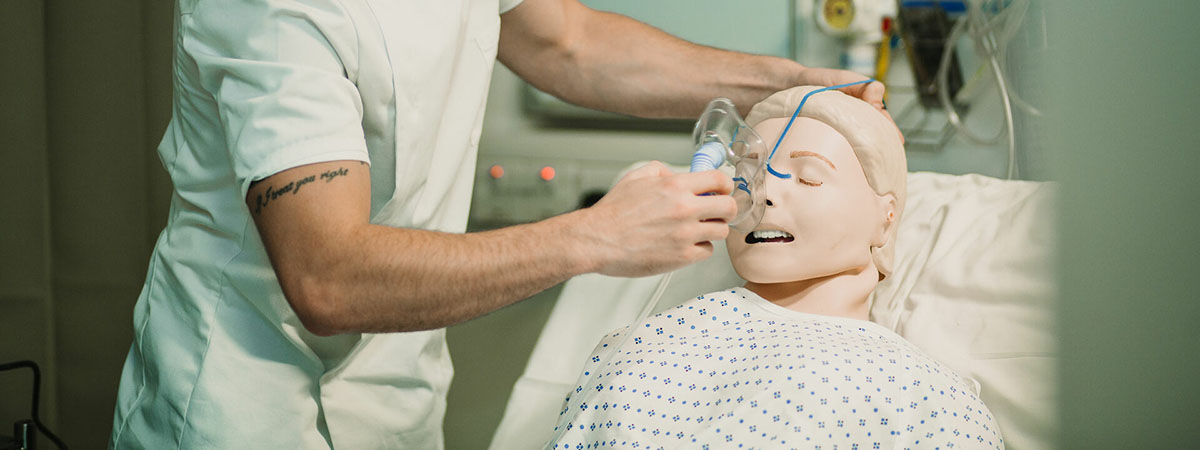
We have several adult and baby Simulation (SIM) manikins which are anatomically correct and used for teaching specific techniques such as advanced adult and paediatric life support skills, acute and high dependency clinical skills, first aid and communication skills. The SIM manikins are complete with software which is used to replicate real symptoms, and are enhanced by the manipulation of for example blood pressure, pulse and heart rate for extra realism.
Digital Anatomy Tables
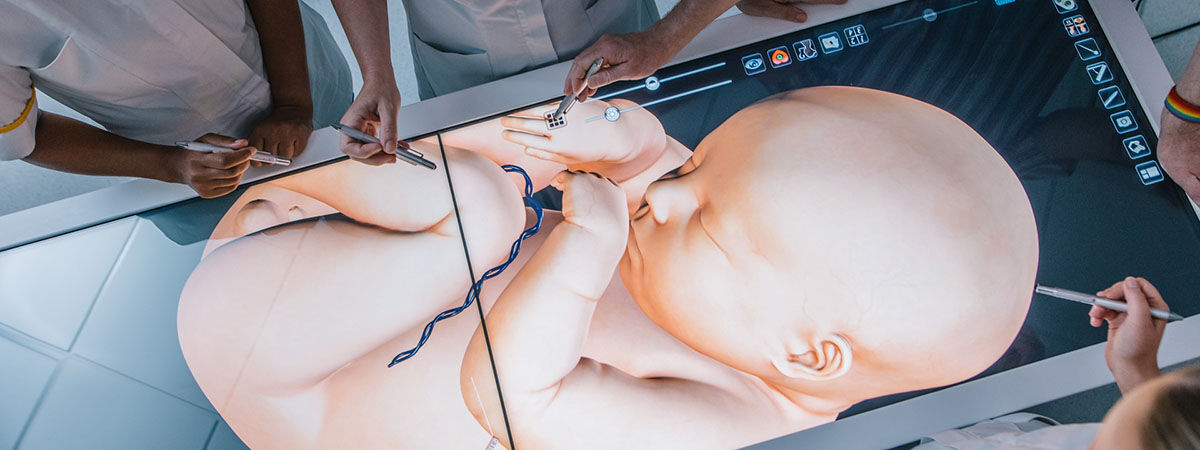
A Digital Anatomy Table allows you to investigate anatomy, from organs and muscles to skeletal forms and blood flow. The software includes real-life MRI scan data to help you develop your understanding of anatomy.
Basic and Advanced Life Support

The Advanced Life Support area is a high dependency unit with monitoring devices which can be attached to people or manikins with outputs shown on the digital screens. The Basic Life Support (BLS) area has dropdown tables which allow you to practice BLS on manikins. Manikins are connected wirelessly to tablets with software which measures the effectiveness of chest compressions.
Birthing Centre
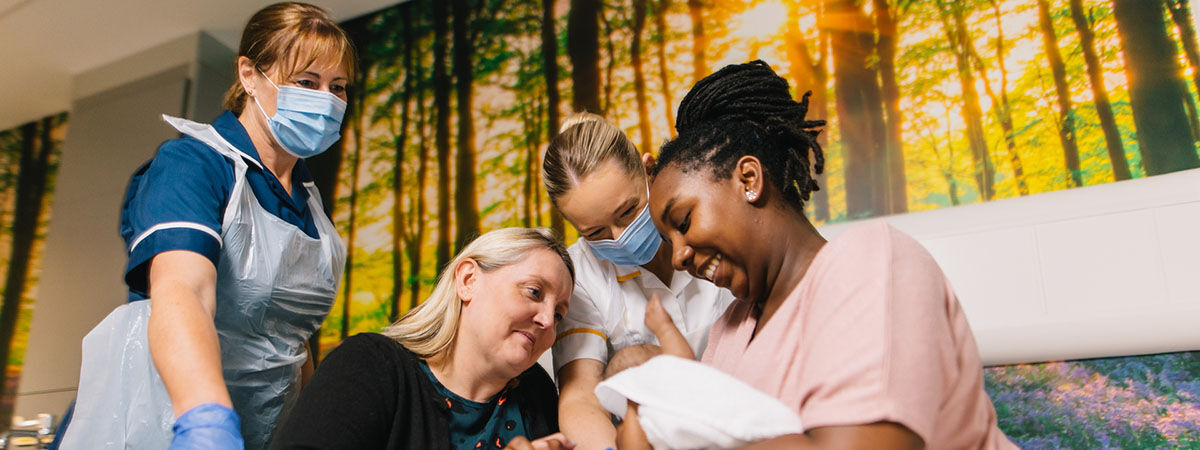
This skills and simulation space has low and high dependency areas to enable midwives to prepare for a range of birth situations. High Dependency equipment includes a birthing chair and low dependency simulation can be offered with a birthing couch and birthing pool, complete with mood lighting. There is also a nursing chair to allow you to practise supporting breastfeeding, a Resuscitaire machine and equipment for monitoring both birthing person and baby. We also have a specialist manikin which can simulate active labour and birth.
Mock Wards
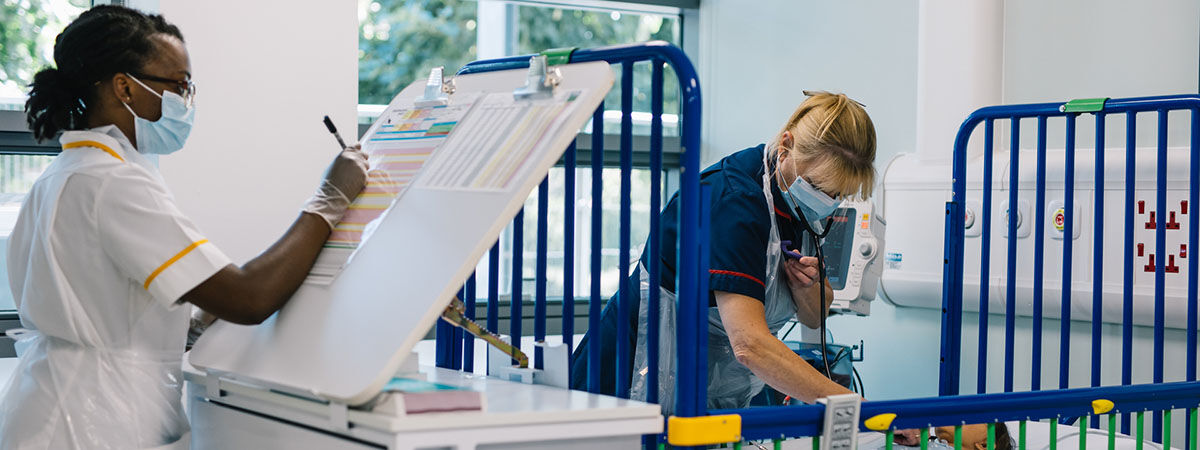
We have two general ward rooms which are set up to look like typical hospital wards, with four to six bays. Our manikins and simulation equipment can be used within the wards to replicate different conditions. The wards are used by many of our trainee professionals to prepare them for working in hospitals. As well as nurses and midwives, SLTs, dieticians, physios, radiographers and social workers may also have hospital-based roles, where they work with patients, providing treatment while they are in hospital, and helping with recovery and rehabilitation.
Digital Health Suite
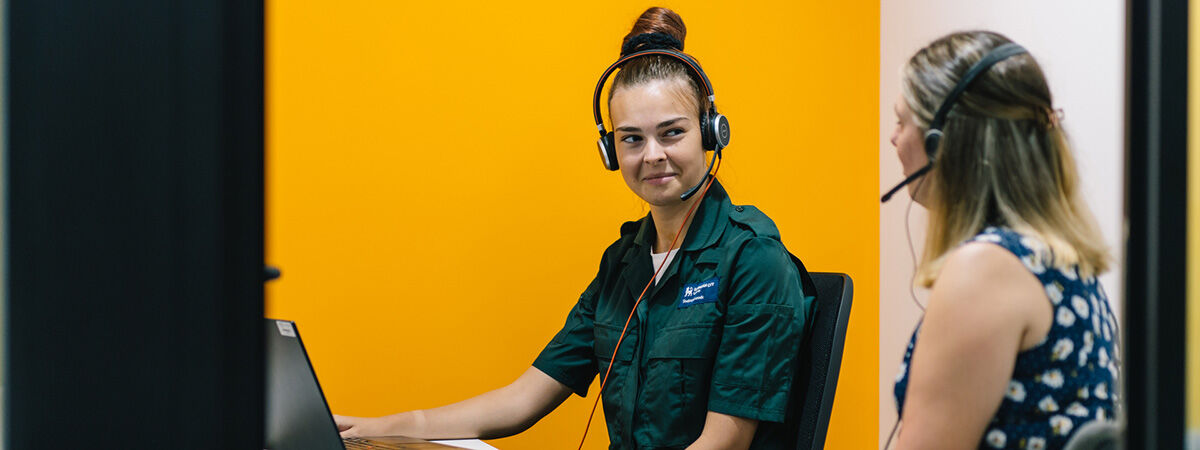
This room allows for small group teaching in the central area with five small telehealth booths down either side. The rooms offer the opportunity to practise delivering healthcare and advice remotely, either over the phone or on a video call.
Home Environment Flat
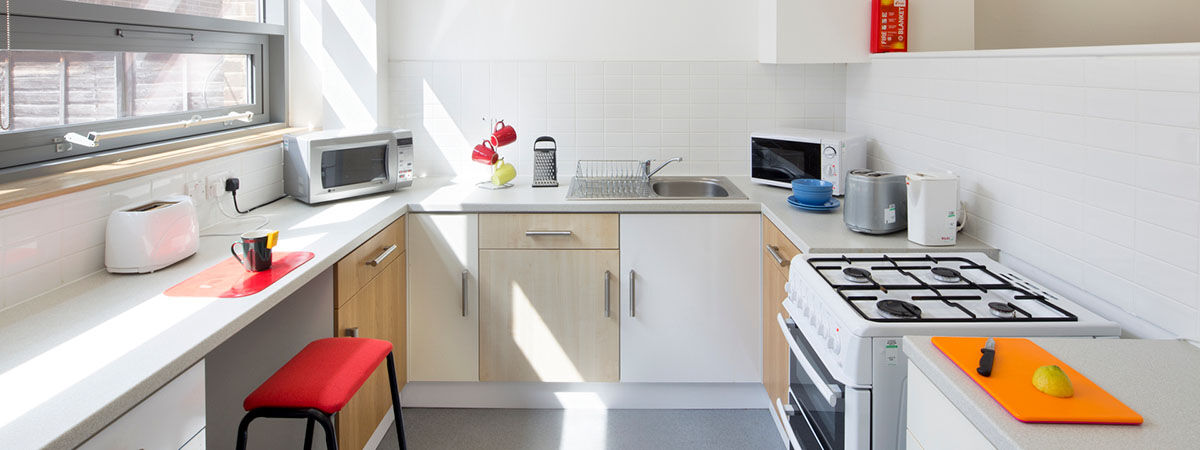
The self-contained home environment flat features a bedroom, shower room with toilet and open plan kitchen and living space. It is hooked up to cameras that can stream lessons and content live to classrooms across the campus and to students at home.
Campus facilities
Our exciting campus offers a wide variety of food and drink facilities, including restaurants and cafés. There is ample study space for both individual and group study and there are various on campus services available to answer your queries.
City South facilitiesSPACE
SPACE (Skills Practice And Care Enhancement) is an innovative practice area all students can access outside of lecture time to use equipment and resources to practise a wide range of skills in a safe, welcoming and supportive environment.
SPACE